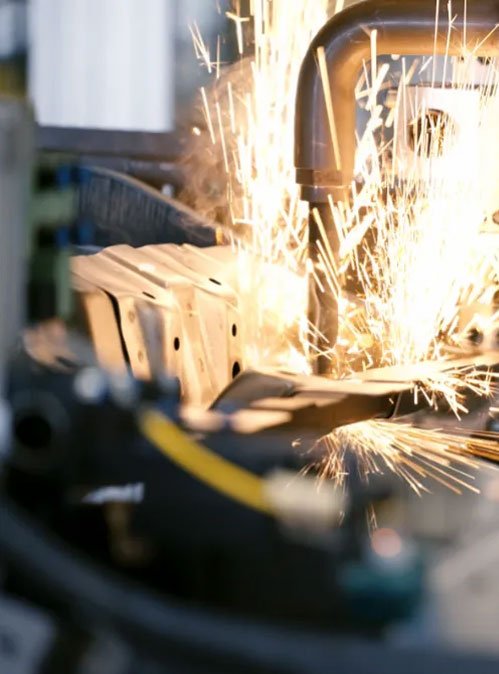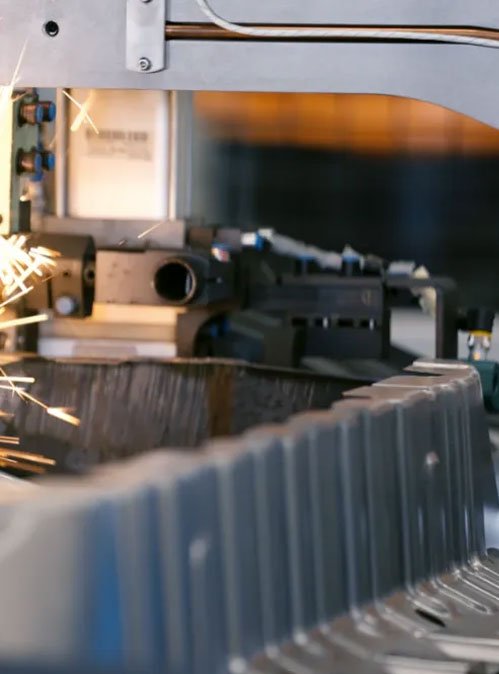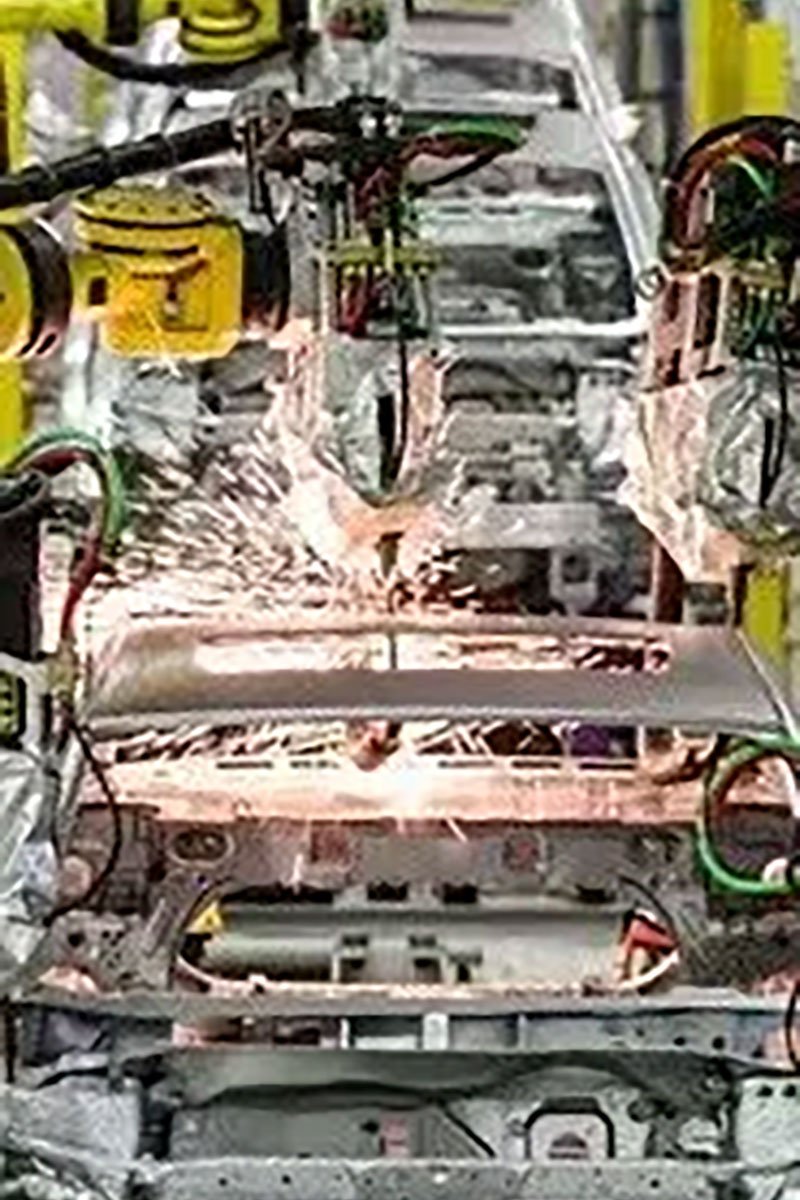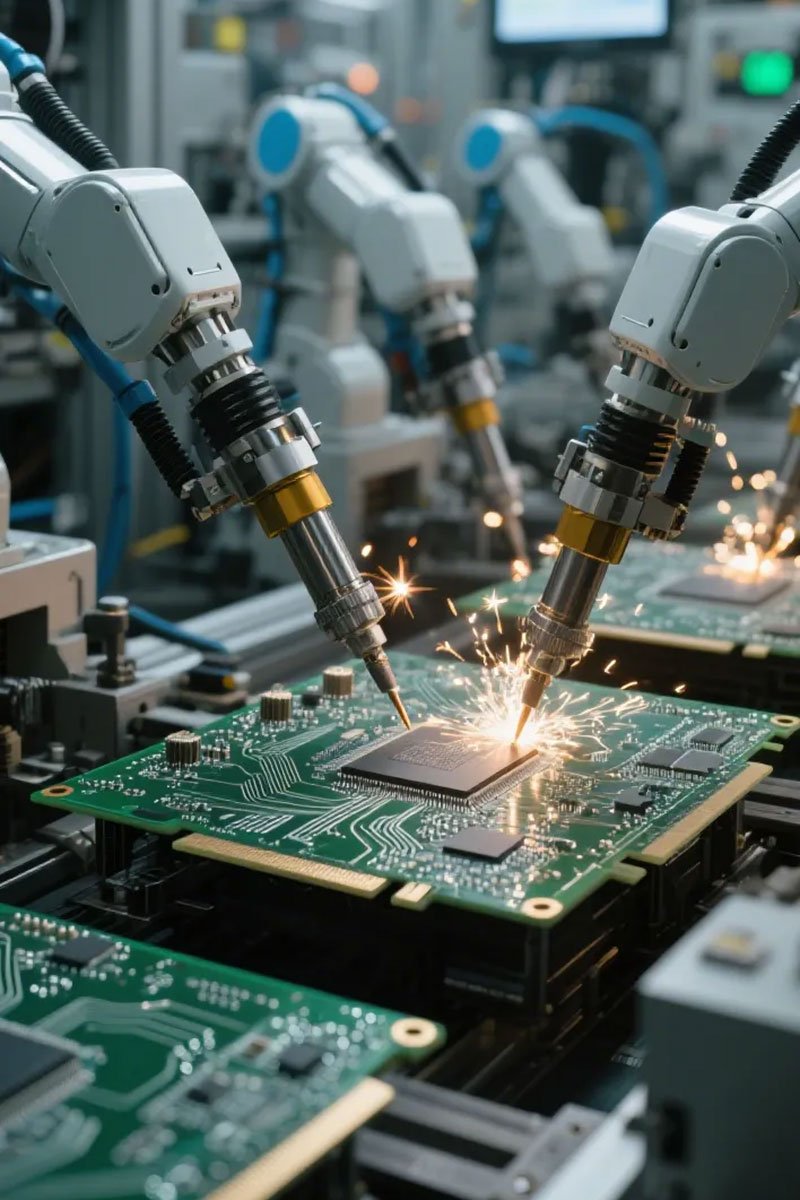A Chemical Reaction: “Electricity × Pressure”
Imagine rubbing two match-heads together quickly: the friction generates intense heat that melts and fuses the wood. Spot welding works similarly — but instead of friction, it uses resistive heat from electric current passing through metal, combined with pressure from electrodes. This forces two metal pieces into an “intimate embrace” at high temperatures. Once cooled, they form a solid weld point.The 4-Step Process:
- Pre-Pressure “Warm-Up”
Electrodes clamp the metal plates like two hands, squeezing out air and impurities to prepare for current flow. - Energize & “Heat”
A massive current surges through the contact point. Resistive heat melts the metal locally, creating a tiny molten pool. - Hold & “Shape”
Current stops, but pressure continues. The nugget cools and crystallizes under compression, forming a strong weld. - Rest & “Reset”
Electrodes lift, ready for the next weld.


The 3 Hidden Forces Behind Spot Welding
Resistance, current, and pressure determine success:- Resistance
Cleaner surfaces and higher pressure reduce contact resistance. Rust or oil acts like a “rebel resistor,” scattering heat and weakening welds. - Current
Higher/longer current = more heat. But too much current burns through metal (causing splatter); too little fails to fuse. It’s a “Goldilocks principle” — just right! - Pressure
Too light: metal won’t fuse fully. Too heavy: thin sheets dent. Precision ensures strong, aesthetic welds.
Spot Welding’s Versatility: From Cars to Gadgets



- Auto Manufacturing
A car body needs thousands of welds. Robots spot-weld in seconds, making frames strong yet light. - Appliances
Fridges, washing machines, etc., use spot welding for leak-proof, sleek exteriors. - Electronics
Circuit boards in phones/laptops rely on micron-precise spot welds — finer than a hair!
Spot Welding: Triumphs & Trials
Strengths:
⚡ Speed: A production-line hero, welding dozens of points per minute.
💰 Cost-Effective: No filler materials needed.
🌀 Minimal Distortion: Localized heat avoids warping metal.
Challenges:
⚠️ Costly Gear: High-end welders are pricey for small firms.
⚠️ Thick Metal Struggles: Plates >3mm make welds struggle to maintain strength.
⚠️ Skill Barrier: Poor parameter control causes weak/cracked welds — expertise is key.
Spot Welding Trivia
Q. What materials can it weld?
A. Low-carbon steel, stainless steel, and aluminum are common. But highly conductive metals (copper/aluminum) need extra power to “tame.”
Q. More welds = stronger?
A. Not always! Spacing and layout affect overall strength. Engineers optimize designs via stress analysis.
From roaring auto plants to humming appliance factories, spot welding acts as an invisible “Master Connector.” Its hidden bonds underpin our daily convenience and safety. Next time you see metal, guess how many “spot weld secrets” it holds!
**Some images sourced from the internet. Contact for removal if copyrighted.**





